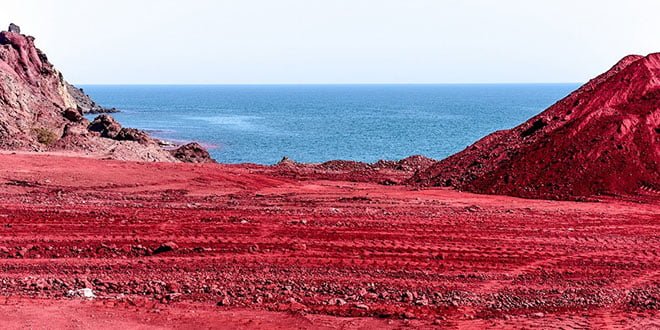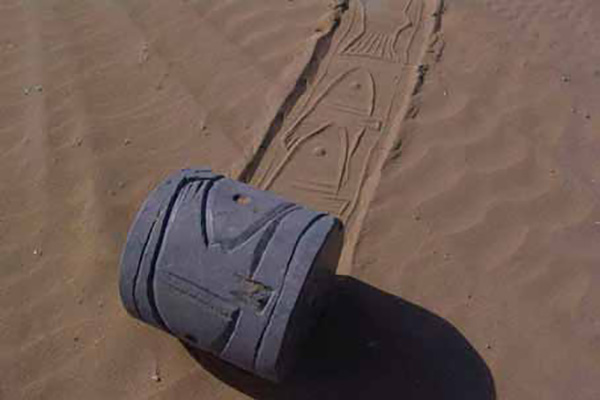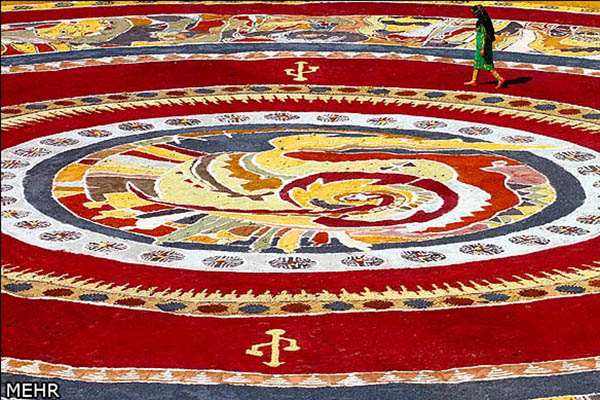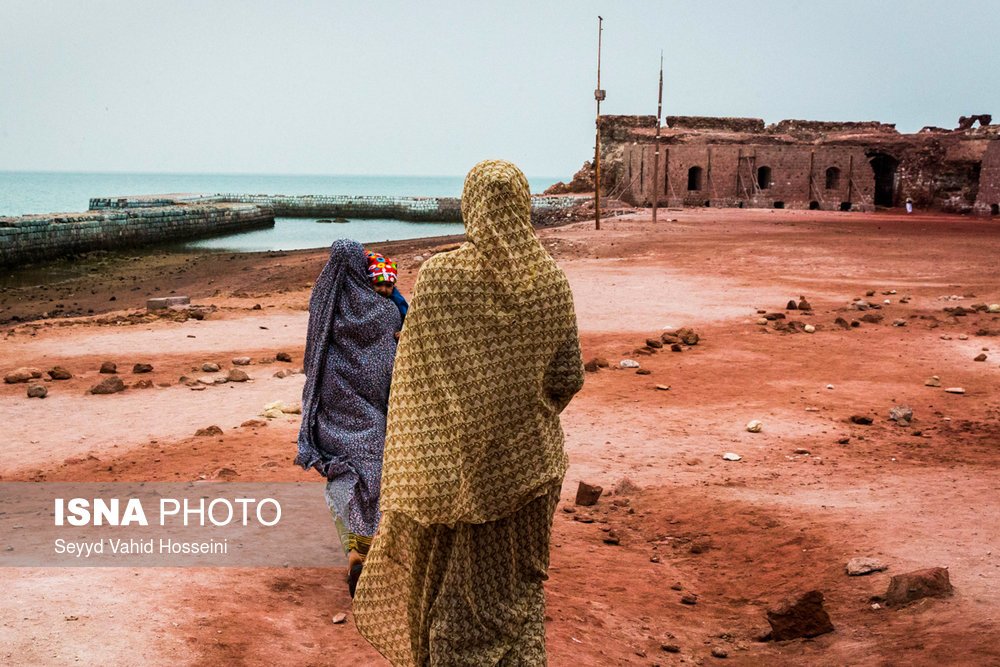Jamshid Bayrami is a renowned Iranian photographer. His most fantastic pictures are the ones he took in 2001 of Mecca; from places inside the shrine where taking photos were forbidden.
He is now determined to stage arts festivals in Hormozgan province in southern Iran; particularly in the unique island of Hormuz with its colourful and even edible soil.
In an interview, he told Shargh newspaper about artistic activities on Hormuz Island.
Why did you choose Hormuz Island?
I’m a photographer and I can say with certainty that I have seen most parts of Iran. When I visited Hormuz Island, I noticed how pristine and picturesque it was. From then on, I travelled to the island every year.
Gradually, I came to realize that the island was shrinking! I mean the architecture, nature and the climate of living there were diminishing and becoming smaller day by day!

What features does Hormuz Island have?
Hormuz Island is home to several natural and God-given treasures. First, it has red soil mines. It takes a century for one centimetre of this type of soil to be formed.
Unfortunately, more than 15,000 tonnes of the red soil in Hormuz have been sold so far, and it cannot be retrieved even if you pay a hundred times [the price].
Really? They keep selling the soil?
Fortunately, the mine is closed now, and I hope it will remain closed forever. The red soil mine belongs not only to 80 million Iranians, but to the world’s natural heritage.
The island’s second treasure is its colourful mountains. Jerry Pawlak of Poland visited Hormuz Island 50 years ago. He said it looks like God coloured the whole world before coming to Hormuz Island and putting his palette there!
I don’t know exactly why the soil is red. But interesting enough, it is the only edible soil in the world. Locals cook a kind of bread called Tomshi. They sprinkle the red soil on it like sumac and eat it.
You mean it has therapeutic effects?
Yes. I have been eating this bread as food for five months now. What is interesting is that locals’ physical strength comes from their soil and water, i.e. one of the most organic types of life in the world. They eat fish and soil.
Hormuz Island’s third treasure is its beaches. A crystal-looking beach stands out in the middle of its cream and grey-coloured seaside and shines at night.
The island’s fourth asset is its history. Historically speaking, the island was the hub of trade for East Asia and even Africa and Europe around 500 years ago. Then the Portuguese attacked and captured the island and practiced banditry for 200 years. The castle built by the Portuguese on the island still stands.
After all, do you know why National Persian Gulf Day was named so? Because it was the day Iranians retook Hormuz Island from the Portuguese.
Now, what things are you going to do on the island?
I’ve been living on Hormuz Island for five months now. I have been working as an advisor on the project. Last year, I drew up a plan on the revival of the island. The plan details what should be done to bring the island back to life. The provincial governor approved my plan and asked me to manage the project. Then we picked a team to execute the plan and began the artistic supervision work.

If you scrape the black cement off the walls, you will see white cement under. Islands in the Mediterranean Sea such as Greece are all white. The walls are made of coral. However, instead of protecting the coral walls, they have coated them with thousands of tonnes of concrete. It was a mistake, and we rectified it.
I replaced all the rusty iron-made doors with wooden ones. I had the floor covered with yellow-coloured mud bricks, and had red Bougainvillea flowers planted in front of houses. The only tree on the island which stands out from the rest has red Bougainvillea flowers.
In other words, we had everything associated with locals’ identity revived, and we breathed fresh life into the island’s beauty. During the war [with Iraq in the 1980s], the Islamic Revolution Guards Corps (IRGC) had built fortifications with cement blocks, which were used as shelters. Everybody proposed the structures be demolished, but we didn’t destroy them. Rather, we changed their function and turned them into the first “book café.”
We have announced that we welcome anybody who would like to help explore Hormuz Island. A whole lot of young people from across Iran have announced their readiness. Hormuz Island openly embraces everyone, but one poit worries me.
I announced that travelers who visit the island as tourists are most welcome; however we kindly requested them to wear Iranian-style clothes, not Western ones. For example, some girls who visit the island have dyed their hair red and blue, have torn trousers on and wear rings on their noses, which is not Iranian.
If you are coming to Hormuz, respect its traditions and customs and do not Westernize the island’s culture. Instead of imitating Westerners, wear the Bandari clothes (an outfit that locals wear in southern Iran). I wish girls visiting the island would, one day, come here wearing Bandari clothes.
How much are local women’s clothes?
From 3,000,000 to 10,000,000 rials.
What artistic activities are going to be done in Hormuz?
There are three cultural sections.
First, a film and photo festival with the subject of “the sea.”
Second, opening a local music festival on the Hormuz Island.
Third, a seafood festival.
The first day, I began work with four people. First, I tried to spot local artists on the island. There is an old woman on the island called “Aunt Kaniz” who draws paintings.
An exhibition of her works opens in Tehran on August 31, 2018 before being staged in New York. “Daddy Mohsen” is another artist who I call “Daddy Picasso.”
He has three rooms. One of them has white walls on which he has portrayed all the problems of his life. He and Aunt Kaniz will hold a joint exhibition in Tehran.
Can Hormuz be registered internationally like the city of Yazd?
Yes, it is possible. Many German and French tourists come to Hormuz and spend a lot of money there. It is interesting to know that when they visit Hormuz, they forget other cities. They sometimes leave with sadness, hoping to come back again, soon.


